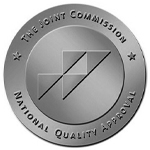
Many people who sprain an ankle don’t think of it as a serious injury and if they aren’t in severe pain, push through without seeking medical care. However, this could be a mistake that results in long-term damage. In today’s article, Dr. David Pagnanelli Jr., a board-certified podiatric surgeon at Keystone Foot And Ankle Center, explains why seeking treatment early is so important.
What is an ankle sprain and how does it happen?
To put it simply, an ankle sprain is when you roll or twist your ankle and the ligaments that hold the joint together stretch too far. Ankle ligaments act like rubber bands to keep your joint in place, but if they stretch too far a sprain occurs. This can be on the inside or the outside of the ankle.
People of any age can get a sprained ankle. Causes include falls, stepping on an uneven surface, sports injuries, non-controlled high-heeled shoes and any other movement causing the ankle to twist or roll out of joint. Those who had ankle or foot injuries in the past can be more likely to suffer a sprain as their ligaments may be weakened from the previous trauma.
What are the symptoms?
Symptoms can vary depending on how severe the sprain is, how long ago the injury took place and whether the ankle had previous injuries. Some of the most common symptoms include soreness or pain, bruising or swelling of the ankle area, difficulty walking and the joint being too loose.
Tears and ruptures are also common ligament injuries but are typically more severe, sometimes requiring surgery. Your doctor will examine the injury and perform in-office tests, so you get the correct diagnosis and receive proper treatment as soon as possible.
When should you go to the doctor?
You should seek medical attention as soon as possible after an ankle injury. Even if you aren’t suffering severe pain or swelling, leaving it untreated can result in bigger, long-term problems. Ligaments that are torn or weakened can cause joint looseness and leave you more likely to have future sprains and/or broken bones which could result in the need for surgery.
What are the treatments?
In most cases your doctor will recommend rest, ice, compression, elevation, bracing and physical therapy which can be at home or at a physical therapy office. For more severe sprains, the patient may be prescribed nonsteroidal anti-inflammatory drugs.
If the treatments listed above are not enough, or if the patient has a history of sprains, the doctor will usually order an MRI so they can get a better look at the ligaments. If signs of rupture or chronic tearing are found, surgery is needed to repair the injury.
What does surgery involve?
A small 2-centimeter incision is made on the ankle during surgery. I use the Broström technique combined with the Internal Brace system, which is the latest and most advanced technique and system out today. This is the surgery used to repair injuries in professional athletes, so if the patient is young and athletic they will likely be able to recover well enough to continue playing sports.
Recovery includes two to three weeks of non-weightbearing, followed by physical therapy. Younger patients can typically return to normal activities, including sports, by week four but older patients may need an extra week or two to get back to normal.
If you experience any type of foot or ankle injury or pain, don’t try to “tough it out.” The sooner you get medical attention, the quicker you can treat the problem and hopefully avoid long-term issues.
Keystone Foot and Ankle Center is accepting new patients for both our Chambersburg and Waynesboro locations! Click here to learn more.
This article contains general information only and should not be used as a substitute for professional diagnosis, treatment or care by a qualified health care provider.




